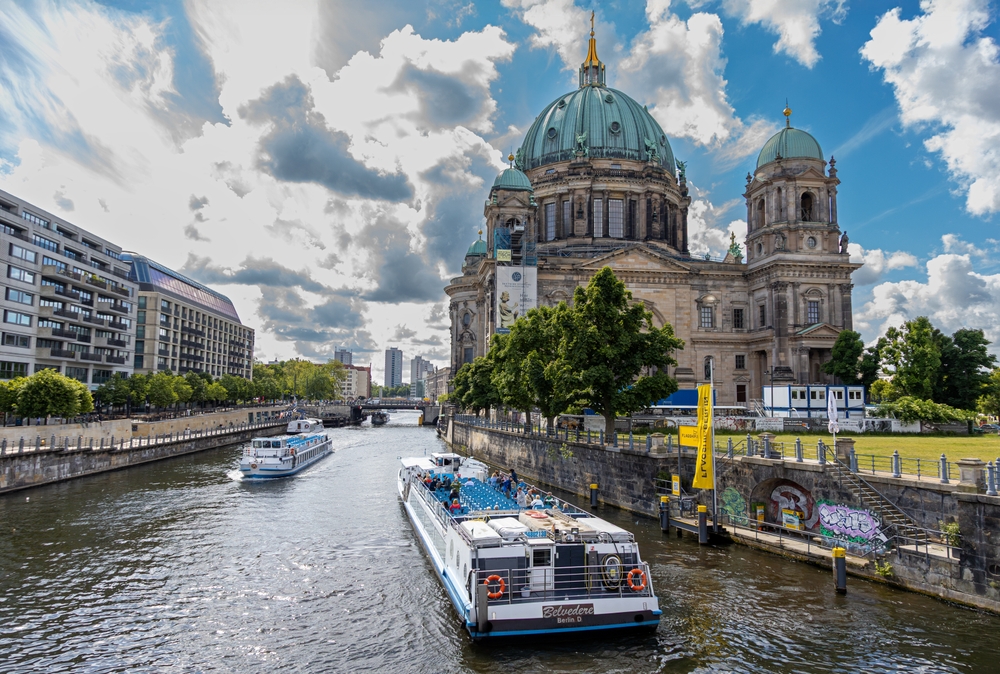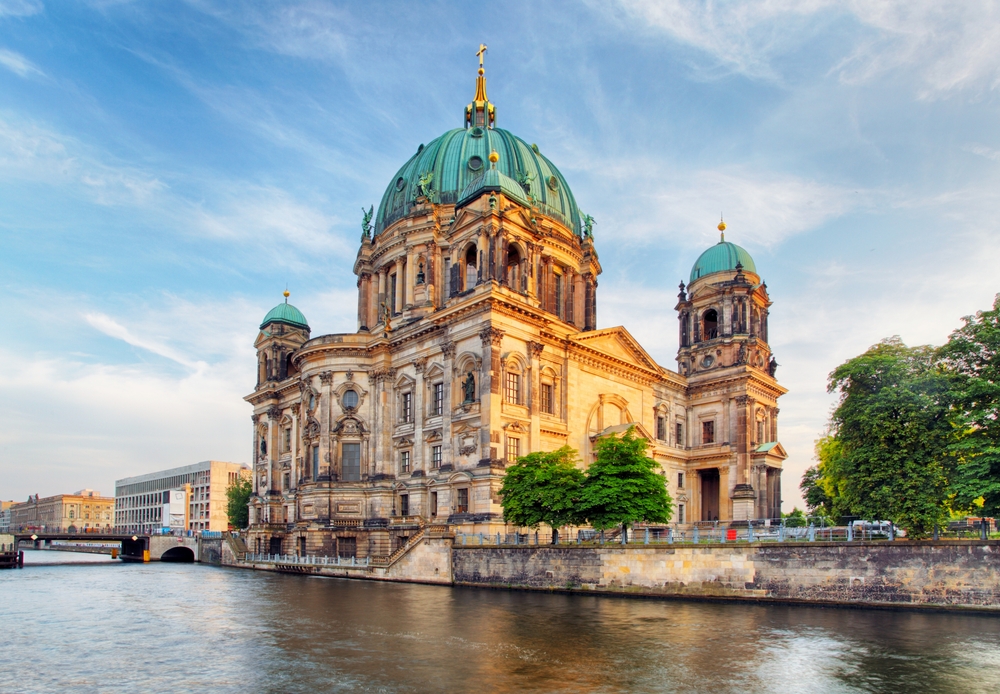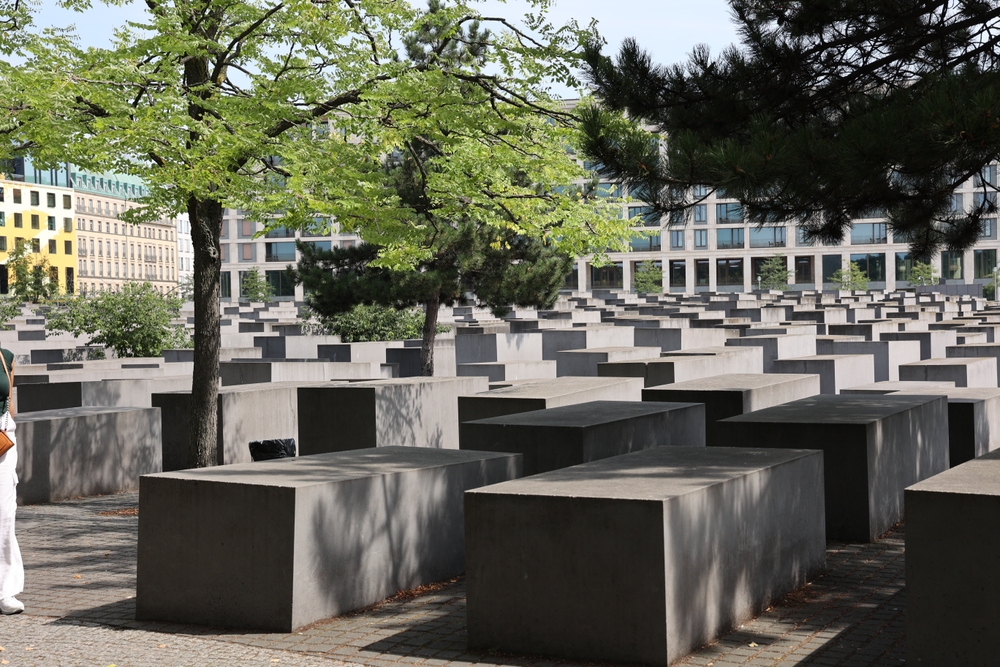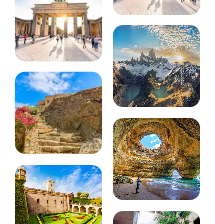8 must-see historic sites and monuments in Berlin

Berlin, the German capital steeped in history, invites you on a captivating journey through the centuries. From the majestic Brandenburg Gate to the imposing Reichstag and the symbolic Berlin Wall, each monument tells a different piece of European history. Here are the 8 must-see historic sites and monuments that make Berlin a unique destination for history and culture buffs.
200 audioguided tours for cities all around the world
DownloadExplore Berlin at your own pace with our interactive audio tour. Discover 31 places of interest with fascinating historical commentaries, original anecdotes and mysteries to solve. An immersive experience to understand the soul of this European capital marked by history, from the Cold War to German reunification.
Also read the Berlin guide:
- Top 7 things to do in Berlin
- What are the best culinary specialities to eat in Berlin?
- Top 5 hotels to stay in Berlin
- Berlin Wall: history
1. The Brandenburg Gate: symbol of German unity
It’s impossible to visit Berlin without stopping in front of the majestic Brandenburg Gate. This emblematic Berlin monument, built between 1788 and 1791 by Carl Gotthard Langhans, perfectly embodies the tumultuous history of the German capital. Located on the famous Pariser Platz (Pariser Platz, 10117 Berlin, rated 4.6/5 on Google out of 48,000 reviews), this neoclassical gate inspired by the Propylaea in Athens is one of the most photographed historic sites in Europe.
A symbol of division during the Cold War, it became the emblem of German reunification after the fall of the Wall in 1989. The bronze quadriga that crowns it, representing the goddess of Victory, also has a chequered history: taken away by Napoleon in 1806, it was recovered in 1814. Let the Navaway itinerary be your guide to discover all the secrets of this landmark, one of Berlin’s most historic sites.
2. The Reichstag: the heart of German democracy

The Reichstag Palace (Platz der Republik 1, 11011 Berlin, rated 4.5/5 on Google out of 32,000 reviews) is one of Berlin’s most meaningful historic monuments. Built between 1884 and 1894 by Paul Wallot, this building has witnessed the great upheavals of German history: from the Empire to the Weimar Republic, from Nazism to reunification.
The Reichstag fire in 1933 marked the end of German democracy and the advent of the Nazi regime. Now the seat of the Bundestag (German Parliament), it has been masterfully restored by architect Norman Foster. Its glass dome, a symbol of democratic transparency, offers an exceptional panoramic view of Berlin. This must-see Berlin landmark absolutely deserves a guided tour with the Navaway audioguide to understand its full historical significance.
3. The Berlin Wall and the East Side Gallery: witness to the Cold War
No trip to Berlin would be complete without discovering the remains of the Berlin Wall, one of the city’s most emblematic historic sites and monuments. The East Side Gallery (Mühlenstraße, 10243 Berlin, rated 4.2/5 on Google for 78,000 reviews) is the longest preserved section of the Wall, stretching 1.3 kilometres along the River Spree.
This open-air art gallery features over 100 works painted by artists from all over the world after the fall of the Wall in 1989. Among the most famous frescoes, the brotherly kiss between Leonid Brezhnev and Erich Honecker remains the most iconic image. This historic Berlin landmark bears witness to the 28-year division of the city and the hope for freedom that animated Berliners. Follow the Navaway audio tour for a complete immersion in this crucial period of European history.
4. Berlin Cathedral: a Baroque jewel on Museum Island

Towering majestically over Museum Island, Berlin Cathedral or Berliner Dom (Am Lustgarten, 10178 Berlin, rated 4.4/5 on Google out of 18,000 reviews) is one of Berlin’s most beautiful historic monuments. Built between 1894 and 1905 at the instigation of Kaiser Wilhelm II, this baroque Protestant cathedral is impressive for its size and architectural richness.
With its 98-metre-high dome, it offers an exceptional panorama of Berlin’s historic centre. The interior is sumptuously decorated with gilded mosaics, monumental organs and the Hohenzollern imperial crypt. This Berlin landmark is an integral part of the UNESCO World Heritage site on Museum Island. The Navaway audio guide will reveal all the architectural secrets of this Berlin wonder.
5. Checkpoint Charlie: the nerve centre of the Cold War
The famous Checkpoint Charlie (Friedrichstraße 43-45, 10117 Berlin, rated 3.8/5 on Google out of 45,000 reviews) remains one of Berlin’s most visited historic sites. This crossing point between East and West Berlin perfectly symbolises the tension of the Cold War. The original checkpoint has disappeared, but a faithful reconstruction allows visitors to immerse themselves in these troubled times.
The adjacent Museum of the Wall recounts the often tragic escape attempts of East Berliners to the West. This historic Berlin landmark bears witness to the desperate ingenuity of those seeking freedom. Checkpoint Charlie remains a must for understanding the division of Berlin and the impact of the Cold War on the daily lives of its inhabitants. Follow the Navaway tour to discover the poignant stories of this iconic site.
6. The Holocaust Memorial: a place of remembrance and meditation

In the heart of Berlin stands the Memorial to the Murdered Jews of Europe (Cora-Berliner-Straße 1, 10117 Berlin, free admission, rated 4.3/5 on Google out of 55,000 reviews). This contemporary historical monument, inaugurated in 2005, is one of the most impressive memorials in Europe. Designed by architect Peter Eisenman, it consists of 2,711 concrete steles of varying heights arranged in a labyrinth.
The underground information centre completes this memorial experience with poignant documentation on the Holocaust. Berlin’s most important historical site invites reflection and contemplation. Accessible 24 hours a day, the memorial offers a different experience depending on the light and the seasons. The Navaway audioguide will respectfully accompany you on this essential discovery for understanding 20th-century European history.
7. The Museum Island: UNESCO World Heritage Site
The Museum Island (Bodestraße 1-3, 10178 Berlin, different prices depending on the museum, rated 4.5/5 on Google out of 12,000 reviews) is a unique architectural complex that has been a UNESCO World Heritage Site since 1999. This exceptional complex brings together five prestigious museums: the Pergamonmuseum, the Neues Museum, the Altes Museum, the Alte Nationalgalerie and the Bode-Museum.
These historic Berlin landmarks house collections spanning 6,000 years of art and culture, from the bust of Nefertiti to masterpieces of Western art. Museum Island is one of the largest museum complexes in the world. Each building tells the story of European art and archaeology. Use the Navaway itinerary to make the most of your visit to these Berlin treasures and discover the links between these essential historical monuments.
8. The Victory Column: symbol of Prussian victories
Dominating Tiergarten Park from a height of 67 metres, the Victory Column or Siegessäule (Großer Stern, 10557 Berlin, rated 4.3/5 on Google out of 15,000 reviews) celebrates Prussian military victories in the 19th century. Erected between 1864 and 1873, it commemorates victories over Denmark (1864), Austria (1866) and France (1870-1871).
At the top stands the golden statue of Victoria, Goddess of Victory, affectionately nicknamed “Goldelse” (Golden Elsa) by Berliners. A climb of 285 steps rewards courageous visitors with an exceptional panorama of Berlin. This historic Berlin landmark, moved from its original location by the Nazis, now offers a privileged view of the capital. The Navaway audio guide reveals the eventful history of this emblematic column and its role in Berlin’s identity.
In conclusion, these 8 must-see historic sites and monuments in Berlin retrace the fascinating history of this European capital. From the Prussian Empire to a reunited Germany, through the dark days of Nazism and the division of the Cold War, each monument tells a different chapter of history. Berlin offers a life-size history lesson, where every stone bears witness to the upheavals of the European continent. For an in-depth and fascinating discovery, follow the Navaway audio tour, which will reveal all the secrets of these exceptional historic monuments.
Frequently asked questions
How long does it take to visit Berlin’s historic monuments?
To visit Berlin’s 8 must-see historic monuments, allow at least 2 to 3 days. The Navaway audioguide tour allows you to make the most of your time with 2 hour 40 minute itineraries covering the main sites. Each monument is worth between 30 minutes and 2 hours depending on your interest in history.
What’s the best way to get to Berlin’s sights?
Berlin’s historic centre is easy to visit on foot or by public transport. The historic monuments are well served by the underground (U-Bahn), trams and buses. The Berlin WelcomeCard gives you unlimited access to public transport and discounts on admission to museums and monuments.
Are Berlin’s historic monuments free to visit?
Several monuments are accessible free of charge: the Brandenburg Gate, the remains of the Berlin Wall, the East Side Gallery and the Holocaust Memorial. Others, such as the Reichstag (dome), Berlin Cathedral or the museums on Museum Island, require a reservation or a ticket.
When is the best time to visit Berlin’s historic monuments?
Berlin can be visited all year round. The period from May to September offers the best weather conditions for exploring the city’s outdoor monuments. Winter allows you to visit museums in good conditions, and Christmas markets add a special atmosphere to the illuminated historic monuments.
200 audioguided tours for cities all around the world
Download
